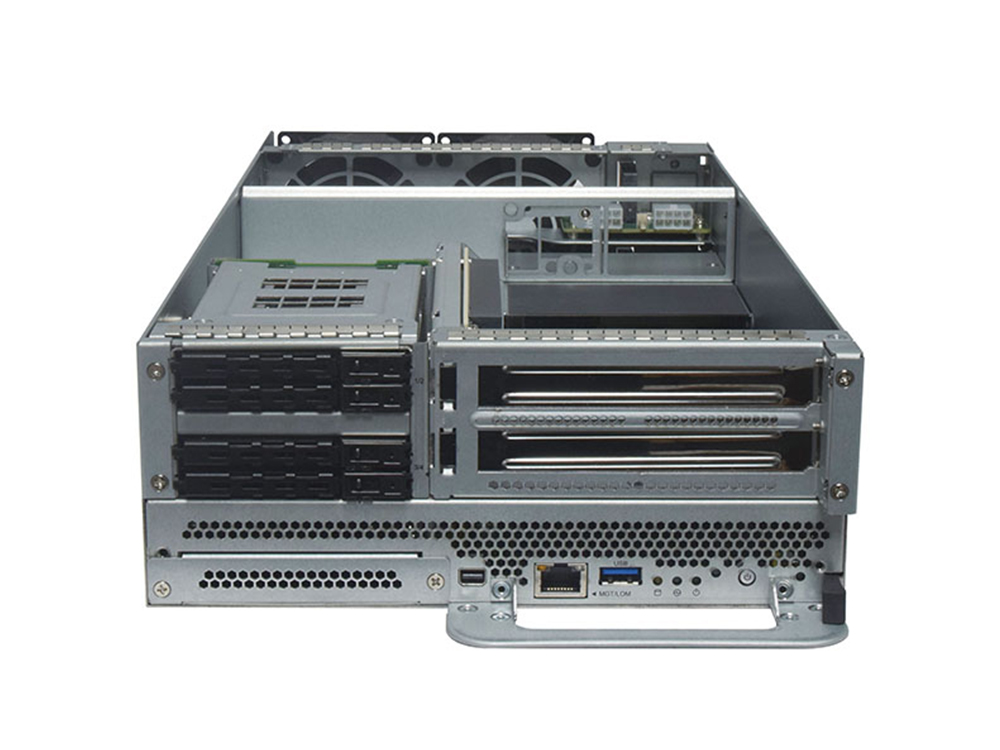To enhance performance, the heat density of the primary heat sources inside edge servers has been increasing. Traditional natural convection cannot meet the cooling needs, and air-cooled forced convection cooling has been widely discussed due to issues such as power consumption and noise.
Immersion cooling for 5G Edge Servers involves the use of liquid submersion cooling techniques to cool and manage the heat generated by servers located at the edge of the network, closer to the point of data generation or consumption
Therefore, using dielectric fluid that does not react with electrical components and adopting immersion cooling with a lower system PUE (Power Usage Effectiveness) index will be an important technology in the future. Currently Lanner is running a proof-of-concept project that uses single-phase immersion cooling to evaluate the heat dissipation design of Lanner's HTCA compute sled HMB-E200.
The total power of all components used in HTCA compute sled HMB-E200 is approximately 724.8 Watt. The CPU uses an Intel Xeon Platinum 8368Q with a heat output of 270 Watt. Heat is transferred to the fin surface through conduction and then evenly dissipates from the fin surface. This is achieved by forcing fluid to flow through the fin, reducing the temperature and carrying away heat. Since the dielectric oil used as the working fluid in this project has extremely high viscosity and the server components are dispersed with variations in height, the key issue in this project is how to design to reduce the bypass effect of fluid inside the cavity and improve the efficiency of heat transfer from the chip to the fin through forced convection.
Overall, immersion cooling for edge servers can be a viable solution, especially when deployed in scenarios where traditional air cooling is less practical due to space limitations, challenging environmental conditions, or the need for energy-efficient and high-density computing.

